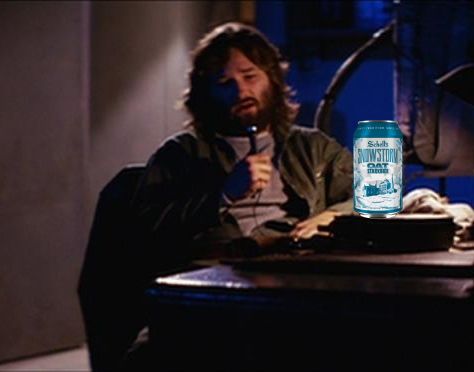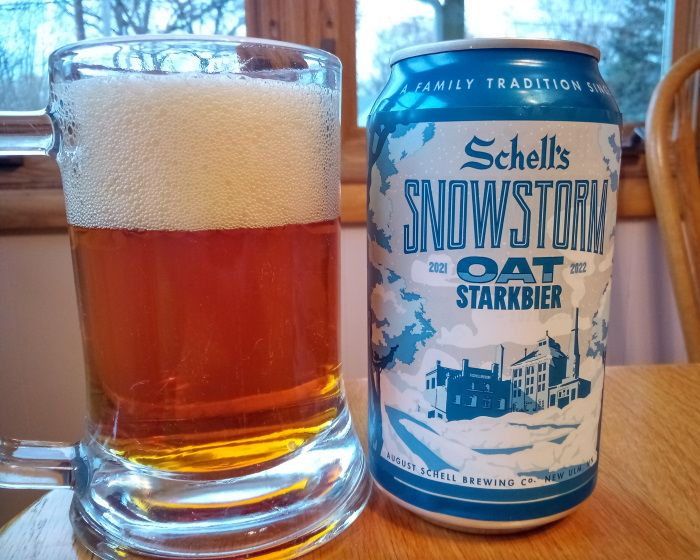And so Schell's latest Snowstorm was a very welcome sight. I
don't see much Schell's beer down here in Madison these days so it was a bit like
running into an old friend. "Snowstorm" is the name of their winter
seasonal but the actual style of the beer varies from year to year. Oats seem
to be the watchword of the brewery these days as last year's Snowstorm was an
oat stout while this year's is an oat Starkbier. In fact, if you pull a Scooby Doo maneuver and peel the label
off of a 2021 can, you'll see that it's an oat stout 2020 can underneath.
Everyone knows what oats are but what is a Starkbier?
I think it's a now-defunct German beer tax category but I am
not sure if the term was ever used outside of levying taxes on brewers. It means
"strong beer" but, again, I am unclear on just how strong it had to
be to be classified as such. Was it equivalent to a bock? Doppelbock?
…
So, after some internet sleuthing it seems that my memory
served me well. Starkbier was indeed a tax category for German bier. My cursory
search didn't yield firm results on just how strong it had to be, however. By
"strong" here we're talking the OG, i.e. – the amount of malty sugar
goodness in the liquid in its pre-beer state. Still, exactly which styles fell
under this umbrella remains a mystery. A couple sources here include all bocks while
another over there limits it to doppelbocks.
I suppose it's moot as the tax category is long gone and
Schell instead uses the term to invoke all the good things that come to mind
when you see a German beer word. You know, like the image of some blond guys in
Lederhosen gathered around a copper kettle in an orderly manner using precise
techniques honed over the centuries in pursuit of brewing perfection within the
constrictions of the Purity Law. Or perhaps it's more along the lines of comely blonde women clad in dirndls carrying numerous steins of beer as their generous bosoms threaten to spill out of their costumes.
My can says that Snowstorm has an A.B.V. of 6.1% so we have
an oat bock on our hands. Interesting. I don't know that I've ever had one before.
Beer lore tells us that the genesis of the bock goes back
several hundred years to Einbeck, Germany. Initially a big, malty ale, it eventually made
its way south where Bavarian brewers gave it the lager treatment. This same
body of lore purports that the style's name comes from the way Bavarians
pronounced the bier's hometown. Instead of a short -e, they said it like
"ah" – "ein Bock". "Bock" being the word for billy goat, someone back in the day decided that goats would be standard on the labels of such beers.
I wouldn’t be surprised if any or all of the above is merely a tall tale that's been passed down through the ages. But it sounds good.
Oddly enough, the marketing team at a brewery that has a German name, brews many German styles, and has (or had) the motto "German craft beer" decided to remove the goat from their bock's label. Harumph.
All those bubbles provided a good fizziness that was set
against a rich maltiness that provided, as on the nose, caramel, honey, and
roasted grain flavors. The oats did their job as a luscious smoothness lurked
beneath the bubbles. The malty sweetness faded fast as I swallowed leaving my
tongue to wallow in the dryness of some hops that were peppery and grassy. My sips each ended on rather dry note.
Despite a panoply of grains, the beer wasn't as sweet as I
thought it would be. I think the fizz and the hops kept those flavors from
getting out of hand. In addition, the malt flavor wasn't just sweetness that
needed to be tamed. There was, after all, that earthy honey taste as well as
the roasted grain flavor so it was a really nice mix on the malt side of
things. Dryness prevailed on the finish as the hops provided a bracing contrast
to the grains.
While sipping this stuff, I was reminded of one of my
favorite winter brews, Winter Skål, from Capital. Oat Starkbier is akin to a
bigger, oatier version of that fine beer. I really enjoyed this brew and how
the fizz and hops took the grains head-on to produce a crisp contrast.
The final couple months of 2021 were good for bocks that marched to the beat of a different drummer. In addition to this oat-laden version, Wisconsin Brewing Company gave us a wild rice one while Vintage Brewing blessed us again this year with their rye weizenbock, Tippy Toboggan. Perhaps next year someone will use a heritage barley or something out of left field like quinoa.
Junk food pairing: For the true Minnesota experience, bust
open a bag of Uffda! Seasoned Salt Lefse Chips to go with your Snowstorm.


No comments:
Post a Comment